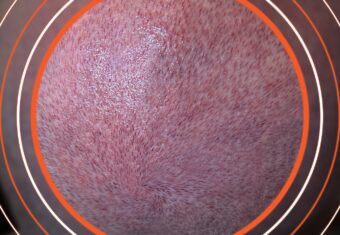Contents
What is an Exosome?
Exosomes are protein vesicles containing numerous growth factors and amino acids. They are obtained from the umbilical cord tissue of newborns and are purified through special processes in culture environments. Exosomes are considered a potential treatment method for hair loss. They facilitate the transfer of DNA, RNA and proteins between cells. Exosomes support cell communication and the transport of molecules between neighboring or distant cells.
Exosomes are cellular vesicles obtained from cell cultures containing numerous growth factors and have the ability to regulate cellular and biochemical events involved in cell renewal.
Exoshot: Exoshot is a solution containing exosomes derived from the culture medium of mesenchymal stem cells (MSCs) obtained from natural umbilical cord tissue. These exosomes can:
Stimulate cell proliferation and migration,
Increase angiogenesis,
Regulate inflammation and immune responses,
Reduce scarring.
How are Exosomes produced?
Exosomes are obtained from the umbilical cord of newborns, following cGMP conditions and quality control processes. Mesenchymal stem cells isolated from the tissue are cultured in specific environments. Dead cell debris is removed from the culture medium. After preliminary treatment, exosomes are isolated by ultracentrifugation. The obtained exosomes are subjected to quality control tests, then prepared for use and stored in appropriate conditions.
Benefits of Exosome Hair Treatment:
Prevents and stops hair loss,
Strengthens hair follicles,
Improves scalp health,
Stimulates the natural hair growth process,
Makes hair thicker, healthier and shinier,
Treats damaged cells.
ExoHair; Follicle Protective Solution:
ExoHair is a special solution derived from mesenchymal stem cell culture fluids. It contains various proteins and growth factors secreted by mesenchymal stem cells and their exosomes.
ExoHair is used to maintain the vitality and quality of hair grafts during the waiting period before reimplantation.
GCell Autologous Tissue Suspension – Micrograft:
This technique uses a “tissue suspension” composed of the patient’s own (autologous) cells for hair loss and tissue regeneration. The GCell® Autologous Tissue Suspension – Micrografting method is a new technique developed to combat androgenetic alopecia and other hair loss problems. The procedure is performed in a single session.
GCell is a device specifically designed for the application of the patient’s own tissue in a clinical setting for the regeneration process.
Difference between Exosomes and Stem Cells:
Although exosomes and stem cells play important roles in biological processes, they have different structures and functions.
Exosomes: Small vesicles surrounded by a membrane, released by cells. They facilitate intercellular communication and support tissue repair. Exosomes transport proteins, lipids, RNA and other biomolecules and are considered essential elements to improve the effectiveness of stem cell therapy. They generally show effects from the third month and have an average duration of protection of 3-5 years.
Stem Cells: Live, undifferentiated cells capable of self-regeneration and differentiation into various cell types. They are potential sources for the repair and regeneration of tissues and organs.
Source and Production:
- Exosomes: Produced and released by various cell types.
- They can be isolated from cell culture supernatants or biological fluids.
- Stem Cells: Obtained from various tissues and possess regenerative capabilities.
- Exosomes represent an innovative and promising approach in hair transplantation and hair loss treatments.
- They play
- a crucial role in cell communication and tissue repair,
and are considered essential
- Exosomes: Produced and released by various cell types.
- components to
- improve stem cell therapy.
- They play a role in many biological processes such as immune response, cell renewal, cancer and neurodegenerative diseases.
- Exosomes represent an innovative and promising approach in hair transplantation and hair loss treatments.
- They have the ability to renew themselves and differentiate into various cell types.
- They are potential sources for the repair and regeneration of tissues and organs.
Source and Production:
- Exosomes: Produced and released by various cell types.
- It is produced and released by various cell types.
- They can be isolated from cell culture supernatant or biological fluids.
Exosomes are seen as an innovative and promising approach in hair transplantation and hair loss treatments. Since exosomes are very small vesicles, it has been seen that they provide communication between cells and also support repair in tissue damage. In addition, exosomes carry proteins, lipids, RNA and other biomolecules. Exosomes are the main working particles of the stem cell and can also be used to increase the effectiveness of stem cell therapy. It starts to show its effectiveness after the 3rd month, and has an average protection of 3 to 5 years.












